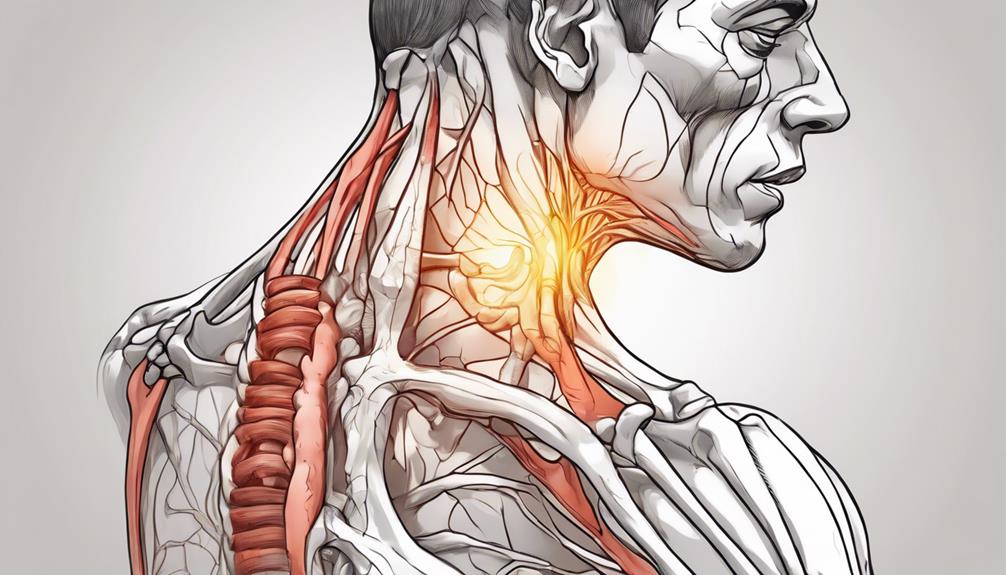Fortify Your Frame: Effective Strategies for Fracture Prevention
You may not realize it, but a simple fall can lead to a fracture that disrupts your daily life. Imagine taking a tumble on the stairs and finding yourself unable to carry out your regular activities for weeks. It’s a scenario that no one wants to face, but the good news is that there are effective strategies for preventing such fractures and maintaining strong, healthy bones.
By understanding the factors that contribute to bone health and implementing specific measures, you can significantly reduce your risk of fractures. In this discussion, we will explore practical steps and insights that can help you fortify your frame and safeguard against the threat of fractures.
Key Takeaways
- Implement evidence-based strategies to address environmental hazards and make necessary home modifications to create a safe and secure environment for fall risk reduction.
- Engage in weight-bearing exercises such as running, weightlifting, dancing, and jumping to slow down bone loss, improve balance and coordination, and increase bone density and strength.
- Consider using hip protectors in conjunction with other fall prevention strategies and interventions to reduce the risk of hip fractures, ensuring proper fit and consistent wear.
- Incorporate balance training exercises like standing on one leg, using balance boards, and practising yoga or Pilates to reduce the risk of falls and improve functional mobility.
Fall Risk Reduction
To reduce your risk of falls, it’s crucial to implement evidence-based strategies that address environmental hazards and promote physical strength and balance.
Fall prevention begins with making necessary home modifications to create a safe and secure environment. Ensure that walkways are clear of obstacles, install grab bars in bathrooms, and improve lighting to enhance visibility. These modifications can significantly reduce the risk of tripping or slipping in the home environment.
Additionally, consider the importance of engaging in weight-bearing exercises to build and maintain strong bones, which can slow down bone loss and contribute to better balance and coordination. Adequate intake of calcium and vitamin D is also essential to support bone health.
Furthermore, avoiding smoking and excessive alcohol consumption is paramount in protecting bone density and strength. If you have concerns about bone health, seeking medical assistance and considering bone density screenings for early detection of bone loss is imperative.
Hip Protectors
How effective are hip protectors in reducing the risk of hip fractures among individuals at risk, such as older adults and those with osteoporosis?
Hip protectors, designed to mitigate the impact of falls on the hips, have shown promise in reducing the risk of hip fractures. Studies indicate that they can lessen the force exerted on the hip during a fall, potentially lowering the likelihood of a fracture.
However, the effectiveness of hip protectors is contingent upon proper fit and consistent wear. It’s crucial to ensure that the protectors are well-fitted to the individual to provide optimal protection.
Furthermore, research suggests that the use of hip protectors in conjunction with other fall prevention strategies and interventions for bone health may yield the most favourable outcomes.
Advancements in hip protector design have aimed to enhance their effectiveness and comfort. Innovations such as lightweight, discreet padding and ergonomic designs strive to improve user compliance and overall effectiveness.
When considering the implementation of hip protectors, it’s essential to evaluate the latest advancements to ensure the best possible protection for individuals at risk of hip fractures.
Balance Training
Balance training, encompassing exercises targeting stability and proprioception, plays a pivotal role in reducing the risk of falls and improving functional mobility. By challenging equilibrium through specific exercises, balance training benefits individuals by enhancing stability and reducing the likelihood of falls.
These exercises also improve proprioception, which is the body’s awareness of its position in space, leading to better coordination and balance in daily activities.
Here are some balance training techniques that can be incorporated into your routine:
| Balance Training Techniques | Description | Benefits |
|---|---|---|
| Standing on One Leg | Maintaining balance on one leg for 30 seconds | Strengthens leg muscles and enhances stability |
| Balance Board Exercises | Using a balance board to improve stability | Enhances proprioception and overall coordination |
| Yoga or Pilates | Integrating balance-focused poses and exercises | Improves balance, flexibility, and core strength |
Regular practice of these techniques contributes to better functional mobility and a reduced risk of fractures. Incorporating balance training into your exercise regimen can significantly improve your overall stability and reduce the likelihood of falls, ultimately contributing to your long-term well-being.
Exercise
Incorporating diverse forms of exercise into your routine can further enhance the benefits gained from balance training, contributing to overall bone health and fracture prevention.
When it comes to running, it’s not just about cardio. Running benefits bone health by increasing bone density and improving bone strength, making it an excellent choice for fracture prevention.
Weightlifting is another crucial form of exercise for bone health. It not only increases bone density but also strengthens the bones, reducing the risk of fractures.
Dancing is a fun and effective way to promote bone health, as it’s a weight-bearing activity that can increase bone density. Additionally, incorporating jumping exercises into your routine can strengthen hip bone mineral density, further reducing the risk of fractures.
Engaging in weight-bearing activities such as tennis, golf, or racquetball can also fortify the bones, making them less susceptible to fractures.
Medication Adherence
Improving medication adherence is crucial for maintaining optimal health and minimizing the risk of complications. It is essential to understand the importance of consistently following a prescribed medication regimen as directed by your healthcare provider.
Factors such as forgetfulness, side effects, cost, and lack of understanding about the medication’s importance can influence adherence.
To improve compliance, utilizing support systems and strategies such as pill organizers, setting reminders, seeking financial assistance for medications, and asking for simplified dosing regimens can be beneficial.
Open communication with healthcare providers about any challenges with medication adherence is crucial for finding solutions and ensuring the best health outcomes.
| Strategies to Improve Medication Adherence | Benefits |
|---|---|
| Utilize pill organizers | Helps in organizing multiple medications |
| Set reminders | Aids in remembering medication schedule |
| Seek financial assistance for medications | Reduces cost barriers to adherence |
| Ask for simplified dosing regimens | Eases the complexity of medication schedules |
| Open communication with healthcare providers | Facilitates finding solutions for adherence challenges |
Are Calcium Supplements Effective in Preventing Fractures?
Calcium supplements have been widely debated for their effectiveness in preventing fractures. Some studies suggest they may reduce the risk, while others show no significant impact. For a comprehensive understanding of calcium supplementation, consult the ultimate guide to calcium supplementation for in-depth insights.
Frequently Asked Questions
How Can a Fracture Be Prevented?
To prevent fractures, focus on nutrition and exercise to build bone strength. Engage in weight-bearing activities and consider supplements if needed. Also, implement fall prevention techniques, such as removing hazards and improving balance and strength through exercises.
What Are Recommended Strategies to Help Reduce the Risk of Osteoporosis?
To help reduce the risk of osteoporosis, it’s recommended to focus on dietary calcium intake and engage in weight-bearing exercises. These strategies can aid in building strong bones and slowing down bone loss, ultimately supporting bone health.
What Is the Most Effective Way of Reducing Fracture Risk in Osteoporosis?
Engage in weight-bearing exercises to strengthen bones and reduce fracture risk in osteoporosis. Ensure adequate calcium intake for bone health. A combination of these strategies is most effective in preventing fractures and maintaining bone strength.
How Can I Improve My Bone Frame?
To improve your bone frame, focus on strengthening exercises like weight-bearing activities and resistance training. Additionally, ensure you’re getting sufficient calcium and vitamin D from nutritional supplements to support bone health and density.
Conclusion
In conclusion, maintaining bone health is essential for fracture prevention. By incorporating strategies such as fall risk reduction, hip protectors, balance training, exercise, and medication adherence, you can fortify your frame and reduce the risk of fractures and osteoporosis.
It’s crucial to prioritize bone health through these actionable steps and seek medical guidance when necessary. Remember to prioritize a balanced diet, exercise regularly, and avoid harmful habits to support strong and healthy bones.







